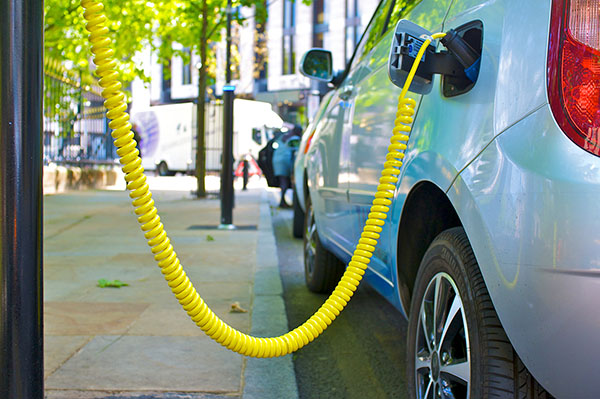A study published in the journal Atmospheric Environment (April 2019), comparing the differences in air pollution caused by automobiles powered by internal combustion (conventional) engines versus electric vehicles (EVs) powered by batteries, reported that EVs improve air quality even when the electricity used to power them was generated by non-renewable combustion power plants. The study was based on air-quality simulations modeling emissions from automobiles and power plants of ozone and particulate matter—two noxious compounds found in smog that are associated with respiratory health problems. See also: Air pollution; Automobile; Battery; Electric vehicle; Internal combustion engine; Ozone; Particulates; Power plant; Respiratory system disorders; Simulation; Smog

Among the reported findings were ozone pollution decreases with increasing numbers of EVs replacing convention vehicles, regardless of whether electrical power is generated by renewable or non-renewable sources. In addition, particulate matter decreases with electricity generation by emission-free (renewable) sources, such as solar and wind power, as opposed to non-renewable sources. See also: Energy sources; Solar energy; Wind power
Although this particular study was based on passenger cars in the United States, the results have worldwide implications. For example, the results imply that Norway, which generates 98 percent of its electricity from hydropower, should be experiencing air-quality improvements, because EVs accounted for 30 percent of all Norwegian vehicles in December 2018. There, charging access appears to be the greatest limiting factor for further EV adoption. In contrast, the United States, which has about 1 million EVs on the road (that is, about 2 percent of all U.S. vehicles), could benefit greatly in terms of air quality with increased EV adoption. See also: Electric power generation; Hydroelectric generator





